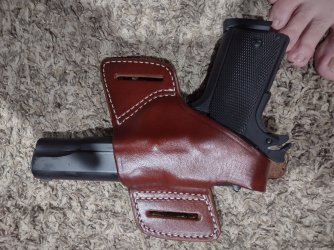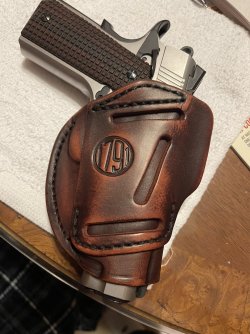Wannabewoodsman
Custom
Couple things.
I just started carrying my new 1911. The holster I bought is a leather one with a thumb strap. Everything is still tight and when I attempt to button it, the manual thumb safety will sometimes come disengaged. I can sort maneuver back to safety with the thumb strap engaged. I'm a bit apprehensive about carrying it with one in the chamber until I'm a little more comfortable. Mostly a psychological thing I believe. I have zero issues carrying my hellcat and Glock (both striker fire) but this is a new gun to me.
So my question is that thumb safety concern an issue if I carry it red? (One in the chamber, hammer to the rear) The grip safety seems mechanically sound.
My other question is also holster related. In this case, I've heard of western folks, Buffalo Bill in particular, talk about covering the inside of their holsters with wax to make drawing easier. Does anyone do this?
I just started carrying my new 1911. The holster I bought is a leather one with a thumb strap. Everything is still tight and when I attempt to button it, the manual thumb safety will sometimes come disengaged. I can sort maneuver back to safety with the thumb strap engaged. I'm a bit apprehensive about carrying it with one in the chamber until I'm a little more comfortable. Mostly a psychological thing I believe. I have zero issues carrying my hellcat and Glock (both striker fire) but this is a new gun to me.
So my question is that thumb safety concern an issue if I carry it red? (One in the chamber, hammer to the rear) The grip safety seems mechanically sound.
My other question is also holster related. In this case, I've heard of western folks, Buffalo Bill in particular, talk about covering the inside of their holsters with wax to make drawing easier. Does anyone do this?


